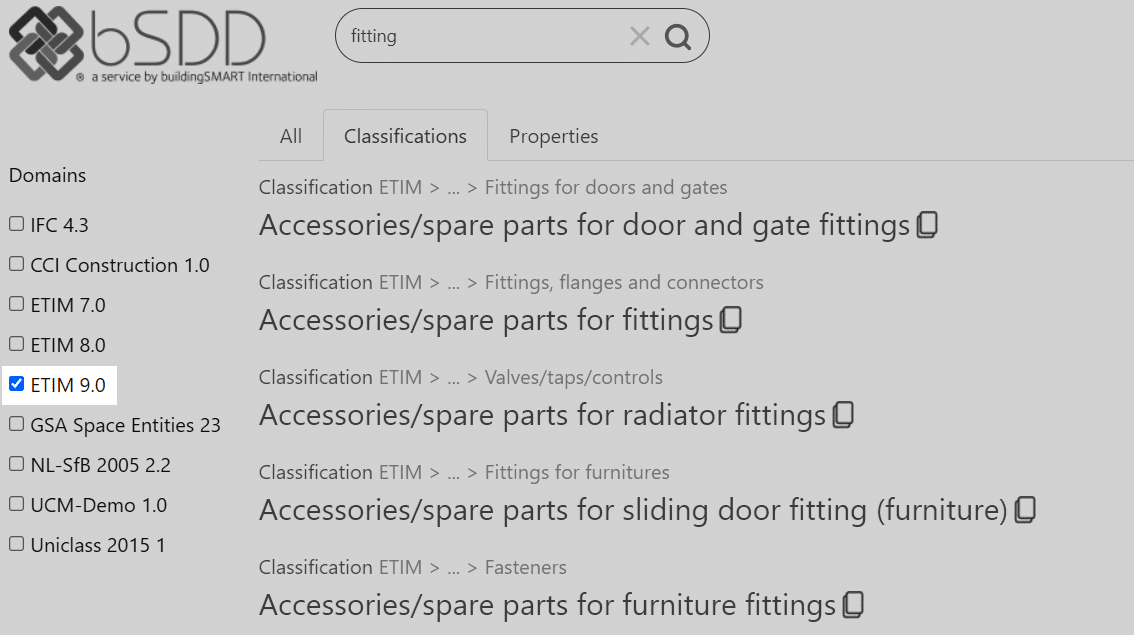Following its release in December 2022, ETIM International is pleased to announce the publication of ETIM 9.0 in the buildingSMART Data Dictionary (bSDD). Indeed, a milestone for both the ETIM model and buildingSMART as driven change makers in the digital transformation of the built asset industry, but how exactly will this impact the sector? Time to catch up with Léon van Berlo, Technical Director of buildingSMART International and Jeroen van der Holst, Community Director of ETIM International.
ETIM API – Smooth data linking process
Closely collaborating with our counterparts at buildingSMART International from start to finish was of course instrumental to the publication of ETIM 9.0 in the bSDD. Thanks to the ETIM API, obtaining the latest release proved to be an overall smooth process for the product management team of buildingSMART. Following great results from extensive testing regarding the upload in the final two weeks of 2022, its content was successfully placed into the live environment of the bSDD.
Prioritizing BIM project support
Van der Holst: “BIM modelers and other design engineers use the bSDD in their digital workflows on a daily basis. As we see it, enabling the use of the ETIM classification in BIM projects is an important evolutionary step in this regard. Although we already serve five different sectors within our product classification model, we fully acknowledge that one cannot design a building project solely using the ETIM product classification model. There is still more to cover when you look at the entirety of a building project, including hierarchical structures of data or sectors that are not covered (yet) by ETIM. The bSDD provides the possibility to use several classification models side by side from one single digital gateway. Being well aware of the fact that as products evolve, classifications evolve with it, it made total sense for us to make the publication of the latest ETIM release in the bSDD a top priority.”
A prime standard for the bSDD
Van Berlo: “The bSDD allows for a uniform digital workflow as it provides a universal structure independent of individual content of the domains involved. Its main advantage is that users can simultaneously search through different datasets, from general technical product information to more niche-driven sets. The value of including ETIM is undeniable. ETIM is not only a high-quality standard, it’s also a widely used standard by manufacturers and wholesalers. As such, it offers a unique and indispensable high quantity of categorized products and subsequent opportunity to generate maximum flow in data between buyers – like installers and contractors – on one side and said manufacturers and wholesalers on the other. With the bSDD, we take it a step further. The data dictionary bridges the void between these parties and their designing counterparts, with ETIM as one of the prime standards that enable us to introduce more use cases and more and better data flows. ”
What is the bSDD?
The buildingSMART Data Dictionary (bSDD) is an online service that hosts classifications and their properties, allowed values, units, and translations. The bSDD allows linking between all the content inside the database. It provides a standardized workflow to guarantee data quality and information consistency.
BIM modelers use the bSDD to have easy and efficient access to all kinds of standards to enrich their model. BIM Managers use the bSDD to check BIM data for validity. Advanced users use the contents from the bSDD to check compliance, automatically find manufacturer’s products, extend IFC, create Information Delivery Specifications (IDS) and much more.
Besides national classification systems (Uniclass, Minnd, etc) and application specific standards (ETIM, UniversalTypes, IfcAirport, etc), project specific, National and company specific standards can be stored in bSDD as well. The internal structure can facilitate ISO 12006-3, ISO 23386 and Linked Data publications.
Download the flyer, or watch this video to learn more about how bSDD can improve your data quality and productivity.

